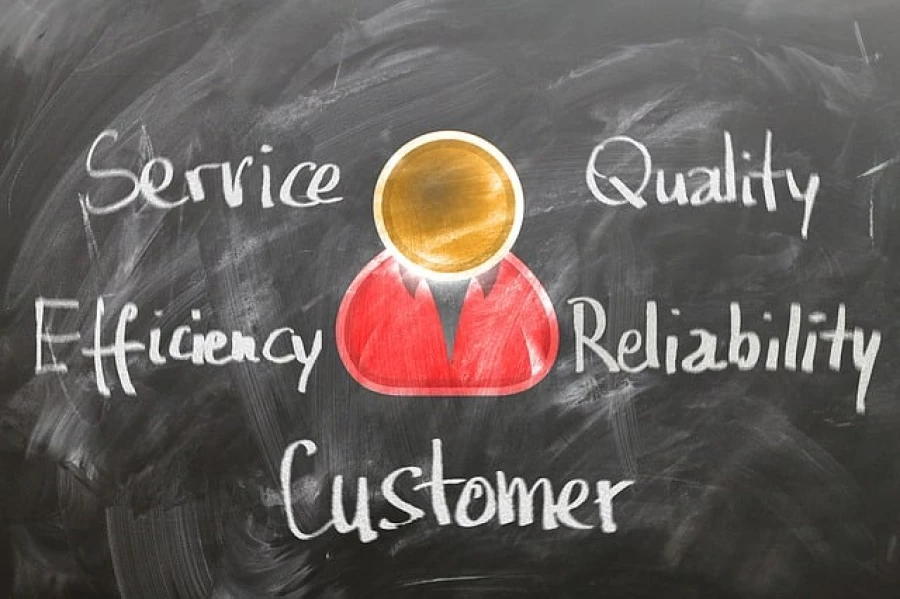5 Best Practices for Managing Customer Feedback and Improving Your Business
Discover the 5 best practices for managing customer feedback to improve customer satisfaction, build stronger relationships and drive business growth.

Managing customer feedback is essential for businesses looking to improve their products or services and drive customer satisfaction. In this blog post, we will explore five best practices for managing customer feedback, providing you with actionable insights to help you implement an effective customer feedback management system.
By creating a feedback-friendly culture, setting clear objectives and KPIs, collecting and analyzing feedback systematically, acting on customer feedback, and communicating results and improvements effectively, you can drive business growth and customer loyalty.
Create A Feedback-Friendly Culture
Creating a feedback-friendly culture is the foundation for managing customer feedback. Companies that actively encourage customer feedback can gain valuable insights that can help improve their products, services, and overall customer experience. To create a feedback-friendly culture, businesses should solicit feedback regularly, provide multiple channels for customers to share their opinions, and respond promptly and respectfully to customer feedback.
Examples of companies that have successfully created feedback-friendly cultures include Zappos, which has built its business on exceptional customer service and regularly solicits customer feedback, and Starbucks, which actively encourages customers to provide feedback through its online feedback system, "My Starbucks Idea."
Set clear objectives and KPIs
Setting clear objectives and Key Performance Indicators (KPIs) is essential for managing customer feedback effectively. By defining specific goals and metrics, businesses can ensure that customer feedback is aligned with their overall business objectives and helps them achieve the desired outcomes.
When setting objectives and KPIs for managing customer feedback, businesses should consider their customer base, their products or services, and their industry.
Examples of KPIs that businesses can use to measure customer feedback include Net Promoter Score (NPS), customer satisfaction (CSAT) score, and customer effort score (CES). These metrics can help businesses track their performance and improve their customer experience over time.
Collect and analyze feedback systematically
Collecting and analyzing feedback systematically is crucial for managing customer feedback. By collecting feedback systematically, businesses can ensure that they receive feedback from a diverse range of customers and capture a comprehensive understanding of their customers' opinions.
To collect feedback systematically, businesses can use surveys, feedback forms, and other tools to gather feedback consistently and efficiently.
Once collected, businesses should analyze feedback by categorizing feedback and identifying trends to gain actionable insights. They can then use these insights to make data-driven decisions and take specific actions to improve their products or services and customer experience.
Act on customer feedback
Taking action on customer feedback is critical for improving customer satisfaction and enhancing the overall customer experience.
To implement changes based on customer feedback, businesses should prioritize feedback based on its impact and feasibility, set specific goals and timelines for improvement, and communicate changes to customers effectively.
By taking action on customer feedback, businesses can demonstrate their commitment to improving their customers' experience and build stronger customer relationships.
Communicate results and improvements
Communicating feedback results and improvements is crucial for maintaining customer trust and loyalty. Customers want to know that their feedback is being heard and that their opinions matter. Effective communication can help to build trust, create a sense of community, and encourage customer loyalty.
To communicate feedback results and improvements effectively, businesses should be timely, clear, and concise in their communication. They should also use multiple channels to reach their customers, such as email, social media, and website updates.
Additionally, businesses should be transparent and share both positive and negative feedback. By effectively communicating feedback results and improvements, businesses can build stronger relationships with their customers and improve their overall satisfaction.
By implementing these five best practices for managing customer feedback, businesses can improve customer satisfaction, build stronger relationships, and ultimately drive growth and success.







